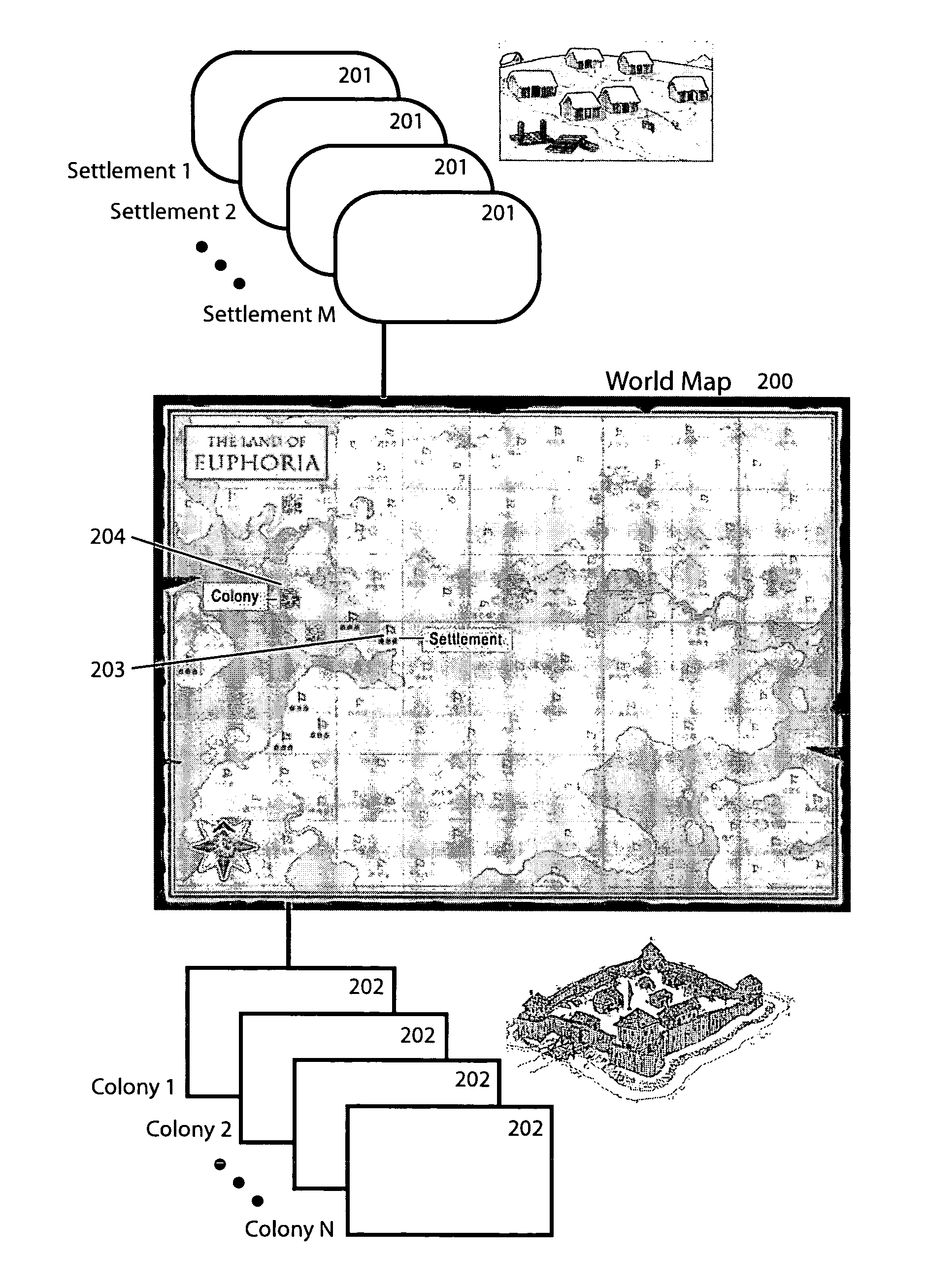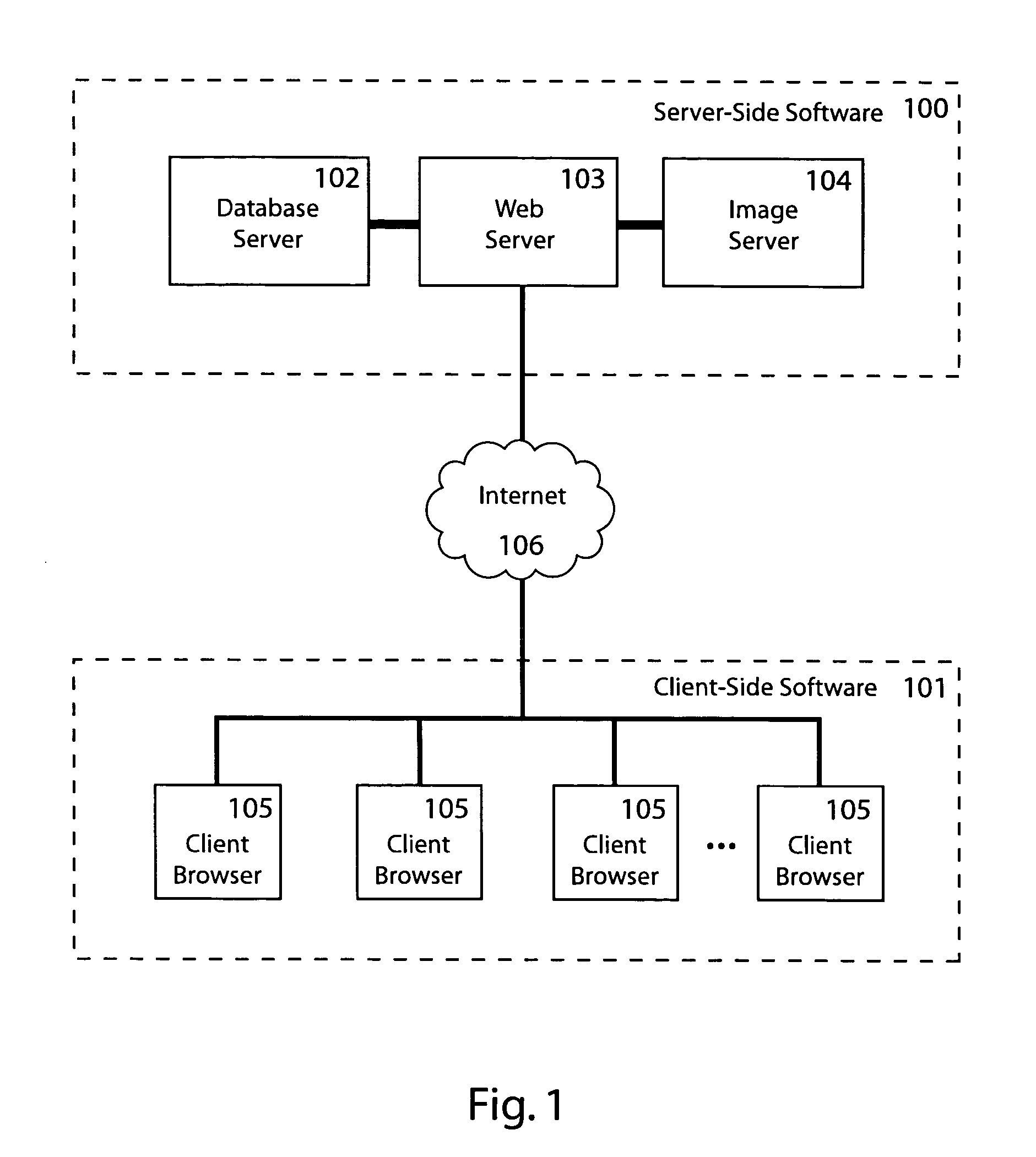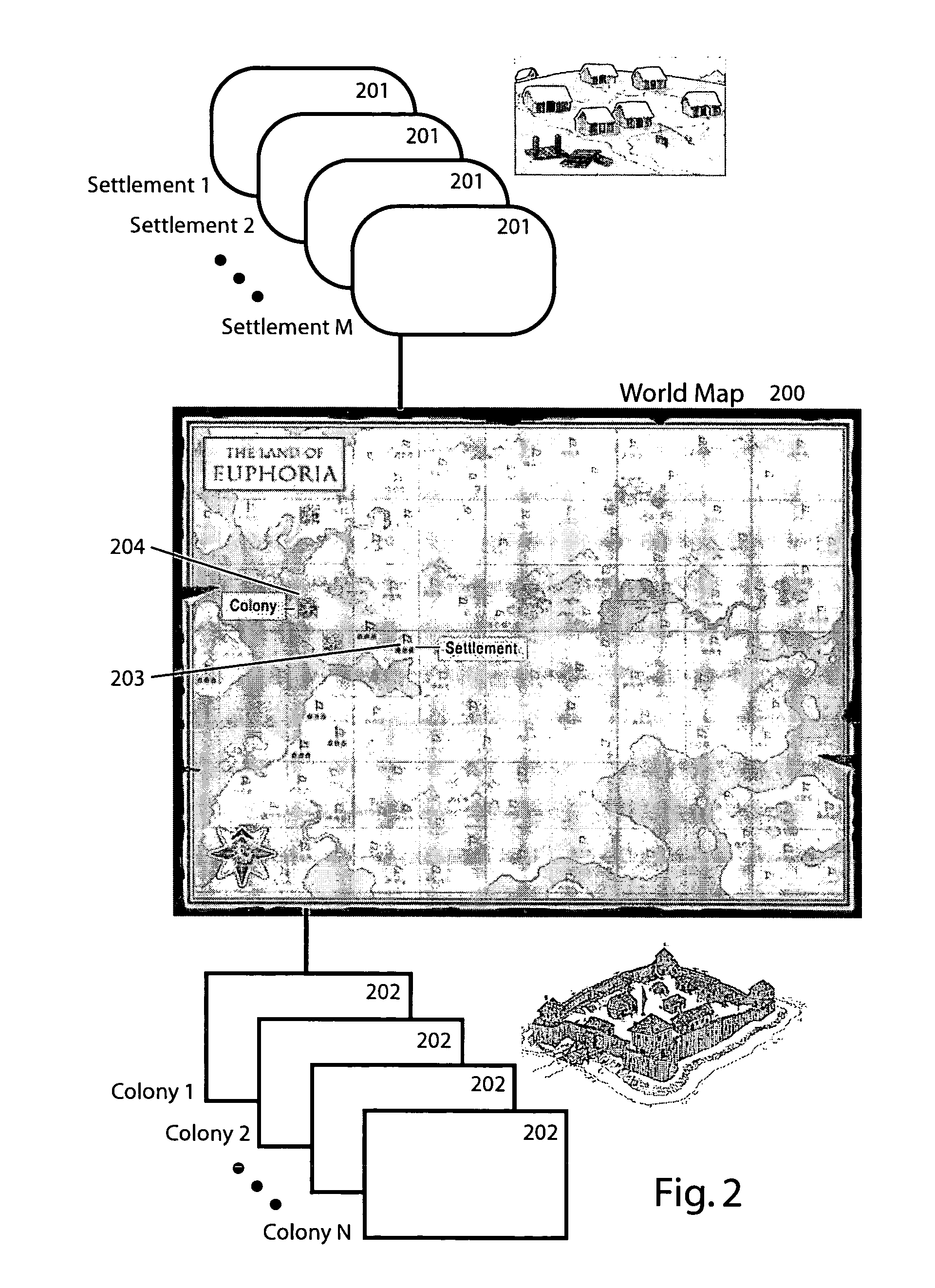Self-organizing turn base games and social activities on a computer network
a computer network and turn-based technology, applied in the field of self-organizing turn-based games and social activities on a computer network, can solve the problems of inability to support real-time, peer-to-peer communication, and the limitations of the internet,
- Summary
- Abstract
- Description
- Claims
- Application Information
AI Technical Summary
Benefits of technology
Problems solved by technology
Method used
Image
Examples
Embodiment Construction
[0056]FIG. 1 is a diagram that describes the software architecture of this system. The system includes components on the server side 100 and the client side 101. The server side components comprise of a database server 102, a web server 103, and an image server 104. The diagram represents software functionality as opposed to physical computer hardware. The server-side components could reside on a single computer running all three software services or split across two or three computers linked by an intranet. The database 102 stores information regarding the state of game and chat environments. Typically, this data is stored in SQL relational tables. The database server also stores settings of self-organizing rules, player information, and player messages. The web server 103 provides the communication linkage to a plurality of client browsers 101 by way of the Internet 106 via a network protocol such as HTTP or HTTPS. The image server 104 transforms and composites image combinations....
PUM
 Login to View More
Login to View More Abstract
Description
Claims
Application Information
 Login to View More
Login to View More - R&D
- Intellectual Property
- Life Sciences
- Materials
- Tech Scout
- Unparalleled Data Quality
- Higher Quality Content
- 60% Fewer Hallucinations
Browse by: Latest US Patents, China's latest patents, Technical Efficacy Thesaurus, Application Domain, Technology Topic, Popular Technical Reports.
© 2025 PatSnap. All rights reserved.Legal|Privacy policy|Modern Slavery Act Transparency Statement|Sitemap|About US| Contact US: help@patsnap.com



